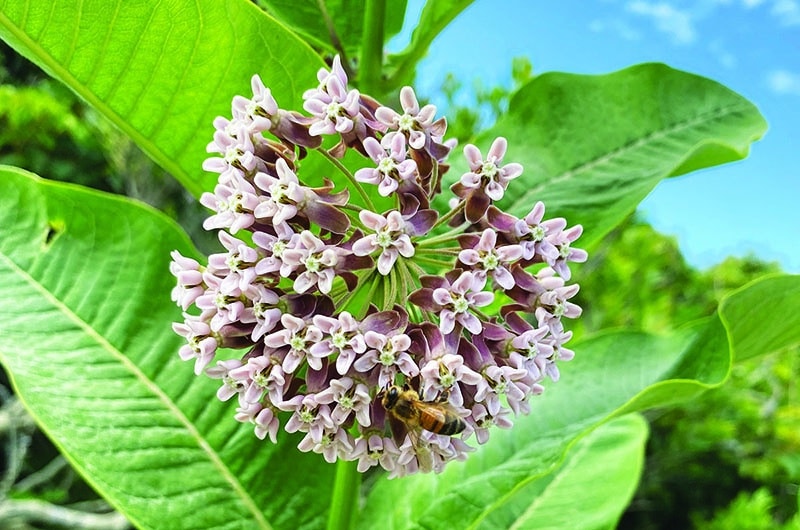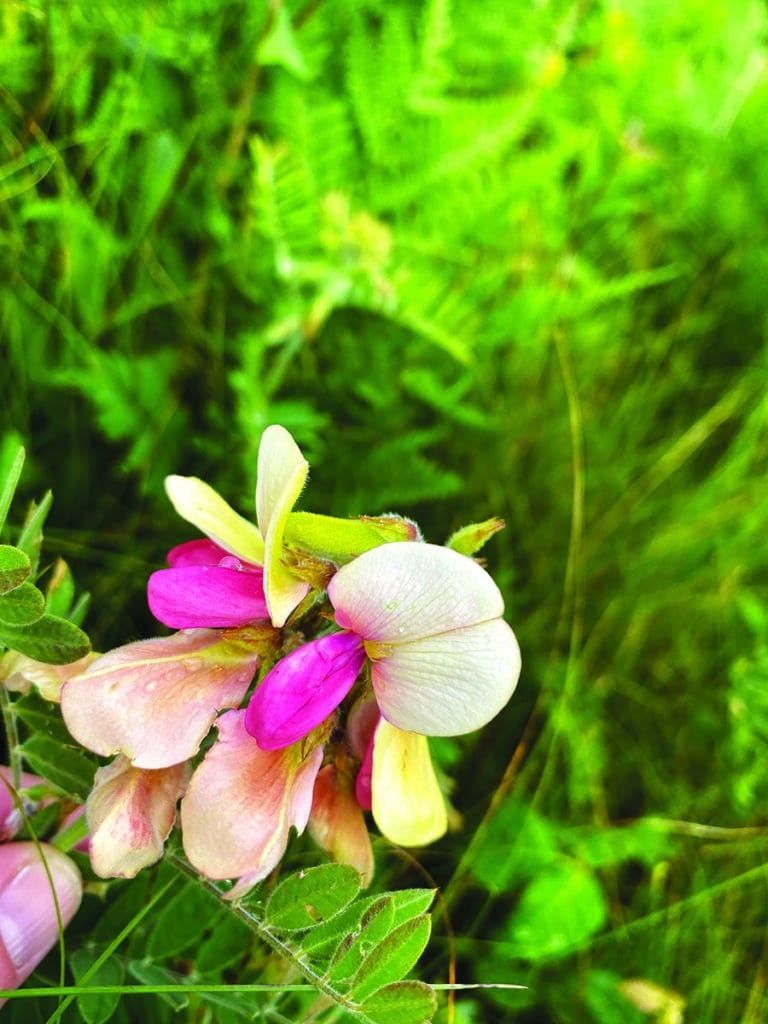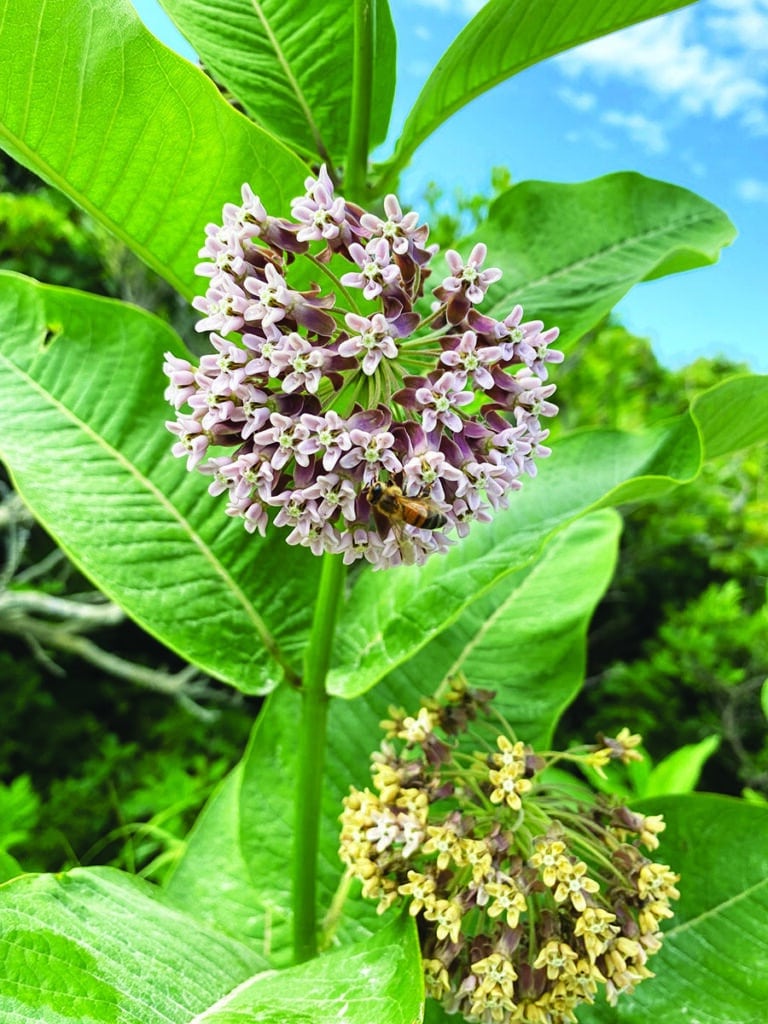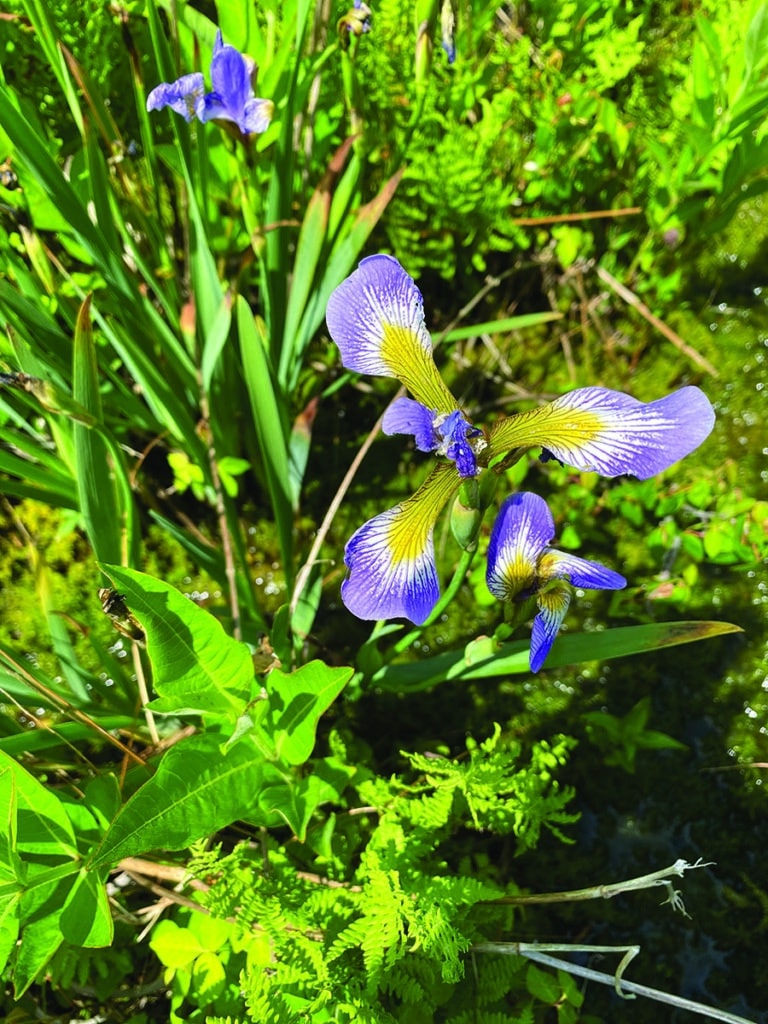by Dr. Sarah Treanor Bois
Director of Research & Education at the Linda Loring Nature Foundation
July is peak season for many things on Nantucket. It can be the most difficult time to get an ice cream cone or a parking space, as many of us know, but it’s also peak growing season – when the highest biodiversity is visible on island. Blooming flowers, ripening berries, budding fall asters, and fledgling birds abound. There is so much to see in every habitat across the island. What’s the best way to see and enjoy this multitude of species? Join in on the Nantucket Land Council and the Linda Loring Nature Foundation’s July Bioblitz Challenge!
What is a bioblitz, anyway? A bioblitz is typically an effort to catalog as many species as possible in a given area over a specified amount of time. Usually, a bioblitz involves a mix of experts and community scientists to cover an area. Nantucket is a great place for bioblitzes, as being an island has clear benefits for geographic boundary. July is the perfect season to assess the living things on the island, and in terms of participants, that’s where you come in. Anyone can participate and look for species. It’s free, and it’s a snap with the iNaturalist application. Have a cell phone? You’re ready to go. All you need to do is take a photo. Using the public free iNaturalist app, we can compile a list of species seen on Nantucket during a particular time frame. By uploading photos of any living thing to the iNaturalist community, you can receive feedback to help you identify what you’ve seen. iNaturalist also has online maps that show what other people have recorded, and where they found it. Take a quality photo, and iNaturalist’s community members of scientists and nature enthusiasts will identify what you found.
Why iNaturalist? This is one of the most popular nature apps helping people around the globe identify plants and animals. It is a joint project between the California Academy of Sciences and National Geographic. As of this writing, there are currently more than 71 million observations from around the world documenting more than 338,000 species. This huge database is used by scientists to track different aspects of nature. By recording and sharing your observations, you’ll create research- quality data for scientists working to better understand and protect nature.
My favorite part about iNaturalist is that when I don’t know what something is an unusual caterpillar, for example all I need to do is take a photo. I can then upload it into iNaturalist and hit “what did you see.” An algorithm in iNaturalist suggests species based on the photo and the location. If that doesn’t get you far or if there are still too many choices, teams of volunteer experts help identify the observation until it is “research grade.”
Participating in the July Nantucket Land Council (NLC) Bioblitz is a great way to learn about iNaturalist (which I use year-round) and to learn about local biodiversity. The NLC also has lots of ways to help you learn about the tools to participate in the Bioblitz.
Nantucket Land Council Associates and volunteers are hosting a series of Saturday “How to Bioblitz” sessions at our Bioblitz partner Linda Loring Nature Foundation at 110 Eel Point Road. The four sessions will be held July 10, 17, 24, and 31 from 10am to 12pm: choose one the fits your schedule. These “How to Bioblitz” sessions are free and open to the public – come explore with us!
Last year, NLC documented over 500 observations of more than 300 unique species. The goal for 2021 is to make more than 1000 observations and identify 500 unique species. As of this writing, the NLC Bioblitz had already recorded 214 observations of 161 species, and it only just started on July 1st! You can check out the project page ( inaturalist.org/projects/nlc-llnf-bioblitz-2021 ) to keep tabs on what’s been seen where and who the leaders are. Common milkweed is currently in the lead with the most observations, followed closely by one of my favorite native wildflowers: Goat’s Rue.
So, for the rest of the month, head out to any location on the island with your smartphone, snap a picture of the species you see, upload to the iNaturalist app, and join NLC and LLNF for Bioblitz 2021! You can document nearly any living thing you find—fish, crabs, insects, flowers, trees, and more—to help document the many special species found on Nantucket Island.
Prizes will be awarded to participants who observe the following: 1) rare/endangered species, 2) migrant species, and 3) species not yet recorded in Nantucket County. The iNaturalist database automatically buffers location information for rare species, so there is no worry in sharing species information about these special species.
By taking part in the 2021 Bioblitz challenge, not only are you engaging with our beautiful open spaces and varied habitats, you are fostering a love for the outdoors for yourself, your children, and joining a community of like-minded environmentalists. To find out more and to receive updates on the results of the bioblitz, go to nantucketlandcouncil.org.






